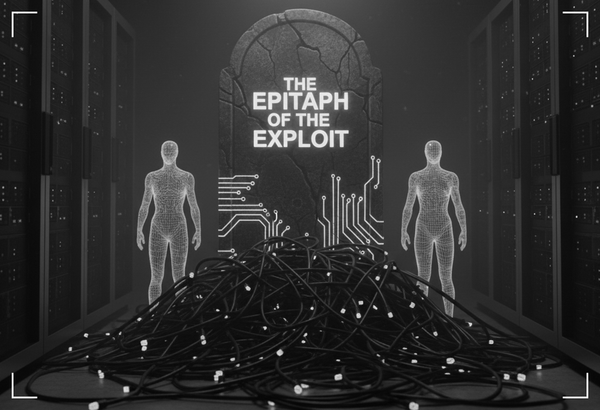Challenges and Vulnerabilities [Undersea Cables - Ep.2]
Beneath the waves, a silent drama unfolds. The very infrastructure that sustains our digital world—the network of undersea cables—faces a relentless barrage of threats.
![Challenges and Vulnerabilities [Undersea Cables - Ep.2]](/content/images/size/w1200/2025/06/a1393942-9245-4b17-8f7b-9ee7501567e2_1920x1080.png)
The challenges and dangers facing undersea cables
Beneath the waves, a silent drama unfolds. The very infrastructure that sustains our digital world—the network of undersea cables—faces a relentless barrage of threats. These are not just minor inconveniences; they are existential challenges that could sever the lines of global communication and plunge us into a world of digital isolation. Imagine a surgeon delicately performing an operation, only to have their tools yanked away. That's the kind of disruption we're talking about.
Natural disasters are a constant menace. Earthquakes can violently shake the seabed, twisting and snapping cables like twigs. Tsunamis, with their immense force, can drag and displace cables, burying them under tons of sediment or leaving them exposed and vulnerable. Underwater landslides, those slow-motion avalanches of the deep, can also wreak havoc, tearing through cable lines with unstoppable momentum.
Human activities, often unintentional, add another layer of risk. Fishing trawlers, dragging their heavy nets across the ocean floor, can easily snag cables, leading to breaks or severe damage. Ships' anchors, dropped carelessly or during storms, can also sever these vital connections. It's a bit like someone blindly swinging a hammer in a room full of fragile glass objects.
In a bizarre twist of fate, marine life itself poses a threat. Sharks, seemingly attracted to the electromagnetic fields surrounding the cables, have been known to bite them. While the damage from a single bite might be localized, repeated incidents can compromise the cable's integrity.
But the dangers don't stop there. The vulnerability of undersea cables to deliberate acts of sabotage or terrorism is a chilling reality. Imagine the chaos that would ensue if a hostile actor decided to target these critical links. Global communication would be disrupted, financial markets would go into turmoil, and essential services could be paralyzed. It's a scenario that keeps security experts up at night.
Repairing damaged cables is a logistical nightmare. It requires specialized ships, remotely operated vehicles, and highly skilled technicians. The process is slow, expensive, and often takes weeks or even months, depending on the location and extent of the damage. In the meantime, the affected regions suffer from degraded or lost connectivity.
And let's not forget the environmental impact. Laying and repairing cables can disturb the delicate marine ecosystem, potentially harming marine life and disrupting habitats. It's a balancing act: providing essential connectivity while minimizing the ecological footprint.
The cumulative effect of these challenges underscores the urgent need for robust protection measures, continuous monitoring, and international cooperation.
The vulnerability of undersea cables
These essential conduits, carrying the vast majority of global internet traffic, face a unique set of threats that could have devastating consequences if realized. A coordinated attack on a small number of strategically important cables could disrupt global communications, cripple international commerce, and even impact national security, leading to significant economic damage and societal instability. Experts have voiced concerns about the potential for state-sponsored actors or terrorist groups to target these critical infrastructure assets, recognizing their strategic importance.
The very nature of the undersea cable network makes it inherently difficult to protect. The cables are dispersed across vast stretches of the ocean floor, often in remote and difficult-to-access locations. Patrolling and securing these extensive areas present immense logistical challenges. This exposed infrastructure is particularly vulnerable to accidental damage, deliberate sabotage, and even the effects of natural disasters.
The concentration of data traffic on specific routes exacerbates the vulnerability. Certain key cables carry a disproportionately large amount of global internet traffic. Damage to or disruption of these critical links could have a cascading effect, leading to widespread outages and severe economic disruption. This concentration also makes these cables more attractive targets for malicious actors who seek to disrupt global communications.
Protecting undersea cables requires a multi-layered approach. Burying cables beneath the seabed offers substantial protection, but it is not always feasible or cost-effective. Careful route planning can minimize the risk of accidental damage by avoiding areas with high fishing activity or unstable seabed conditions. Advanced monitoring and surveillance systems can help detect potential threats, such as unusual vessel activity near cable routes. International cooperation is essential, as cables often cross international waters, and coordinated efforts are needed to ensure their protection. Finally, cybersecurity measures are crucial for protecting cable landing stations and network infrastructure from cyberattacks, which could disrupt or compromise cable operations.
In conclusion, the vulnerability of undersea cables is a pressing concern that demands serious attention. Protecting these critical arteries of the internet requires a combination of technological innovation, strategic planning, international collaboration, and a heightened awareness of the potential threats. As our reliance on the internet continues to grow, so too does the importance of ensuring the resilience and security of the undersea cable network that underpins our connected world.



